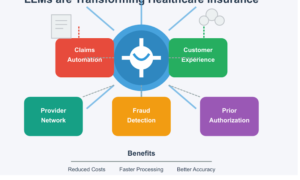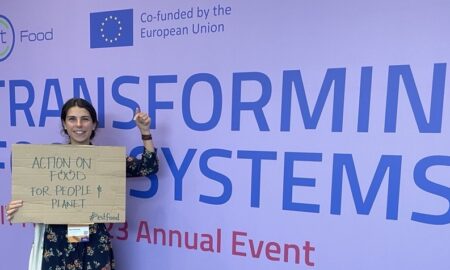One thing’s for sure in today’s healthcare whirlwind: accurately checking insurance eligibility is no-nonsense business. patient insurance verification happens upfront, scrubbing out unwanted surprises down the line. Healthcare providers face a stumbling block with insurance eligibility verification, which can be cluttered with outdated info and contradictory policy fine print.
The fallouts from these difficulties grow like branches on a tree, each one tangled and complex. They not only strain the administrative bandwidth of healthcare practices but also impact patient satisfaction negatively when delays or denials occur due to verification issues. Improve your practice’s bottom line by getting insurance eligibility verification right. When you can determine a patient’s coverage quickly and accurately, you’ll reduce mistakes, free up staff, and ultimately improve patient satisfaction.
Benefits of Modern Tech
The beauty of modern tech lies in its ability to transform clunky workflows and turbocharge accuracy – a match made in heaven. With real-time verification tools, the once laborious insurance process is getting a timely makeover. With these tools, patients get the green light on their insurance eligibility right away. That means shorter wait times and a whole lot happier patients – thanks to a more streamlined experience.
Imagine care providers having the power to retrieve current insurance information at a moment’s notice. That’s exactly what happens when real-time verification systems enter the picture, helping drive errors to near zero. Patients get hurt when coverage gaps slow down care. By aggressively pinpointing these gaps, care flows seamlessly, avoiding treatment shutdowns and putting patient well-being first.
Implementing Insurance Eligibility Verification Software
Broadening the scope of technological integration, the adoption of innovative insurance eligibility verification software like Lifepoint represents a strategic advancement for healthcare providers. When you bring in these software solutions, administrative drudgery gives way to a lean, mean verification machine that whisks away the risk of human oversight.
For maximum efficiency, these software systems feature batch verification, electronic medical record integration, and detailed reporting – everything you need to streamline your workflow. Breaking free from administrative burdens, healthcare providers can redirect their energy towards what truly matters – delivering top-notch patient care. With verification now humming along, healthcare providers can devote more energy to what matters most: patient care, rather than paperwork.
Training Staff on the Latest Insurance Policies and Procedures
No technological solution can fully substitute the importance of knowledgeable and well-trained staff. The moment you slack on staying current with insurance policy updates, your verification process starts to suffer. Keep your knowledge sharp to maintain accuracy and avoid costly mistakes. Stay ahead of the insurance curve by organizing regular training sessions, workshops, or online courses for your healthcare team.
Such an investment in staff development not only empowers employees but also mitigates the risk of errors due to outdated or misunderstood information. A sharp team knows its stuff, mastering policy fine print and staying on top of medical gray areas, so they can serve up crystal-clear guidance to both patients and healthcare teams.
Adopting a Standard Procedure for Verification
Consistency is key to efficiency and error reduction in any operational process, and insurance eligibility verification is no exception. Providers who adopt a single, uniform approach to checking patient eligibility cut down on errors and inaccuracies. This SOP should detail each step of the verification process, from the initial patient contact or appointment scheduling to post-service checks ensuring coverage remains active during the time of service.
imagine an environment where each person, no matter their role, follows the same clear-cut procedures, yielding astonishingly consistent outcomes and almost nonexistent room for mistakes. Speeding up the onboarding process for new team members is a breeze with this system, which also doubles as a troubleshooting guide for everyday verification snags.
Utilizing Advanced Technology: AI and Blockchain
The forefront of technological innovation in insurance verification includes artificial intelligence (AI) and blockchain. Imagine the burden lifted from your shoulders as AI algorithms assume responsibility for tasks that eat away at your day. With data entry and insurance eligibility queries off your plate, you’re free to tackle more pressing challenges, while AI handles the meticulous tasks with precision and speed. Uncover validation roadblocks by feeding your data through AI’s algorithmic lens. Patterns slowly come into focus, pinpointing hiccups in the process. Now AI can swiftly prescribe proactive fixes, getting your verification on a smoother track.
Blockchain technology operates on a completely different playing field, with Fortress-like defenses and SEE-all transparency that gives other methods a run for their money. When applied to insurance verification, blockchain can ensure that patient insurance information is accurate, up-to-date, and securely exchanged between healthcare providers and insurance companies. Put simply, fortified data integrity translates to a verification process you can count on – a rock-solid guardian of accuracy and authenticity.
Strengthening Patient Communication and Education
A critical but often overlooked aspect of the insurance verification process is patient communication and education. Straightforward talk about insurance statuses and verification requirements can work wonders for patient satisfaction, banishing frustration and angst. If patients know their insurance benefits inside and out, they can speed up the verification process by submitting correct documents quickly. This heads-off potential hang-ups and keeps things moving.
Imagine being able to look at your insurance policy and actually know what it means – that’s what healthcare providers should strive for by offering patient-centered educational resources. When healthcare providers are transparent about potential problems, patients are more likely to trust them and feel confident in the care they’re receiving.
Regular Auditing and Quality Checks
To ensure that the insurance eligibility verification process remains efficient and error-free, regular auditing and quality checks are essential. Sometimes, a small snag in the system can have big consequences – claim denials, delays in patient care, and wasted resources. These practices help you zero in on these trouble spots.
Regularly scheduled audits allow healthcare providers to critically assess and refine their verification procedures. Anticipating change, proactive verification guarantees your process evolves in lockstep with the latest industry developments, warding off potential compliance hazards. Training programs take a giant leap forward when they’re fueled by the insights gathered from audits – leading to heightened capabilities and faster workflows.
Collaborating with Insurance Companies
Building robust relationships with insurance companies is pivotal for smoothing out the kinks in the insurance verification process. Care providers that team up with insurers can quickly clear up any disagreements about coverage details or policy changes that impact patient eligibility.
By setting up direct hotlines or assigning a point person, healthcare providers can sidestep insurance red tape and resolve issues in a snap. Claims handling and verification can become a whole lot easier when we partner with insurers to identify our shared hurdles and develop a more streamlined approach.
Keeping Up with Healthcare and Insurance Regulations
The healthcare industry is heavily regulated, and insurance policies are continually adjusted in response to changes in healthcare laws, technology, and market dynamics. In today’s fast-moving healthcare environment, staying up-to-date on compliance regulations is no longer a nicety – it’s a necessity. Providers who fail to adapt will find themselves struggling to keep up with the pace of change.
To stay ahead of the curve, health care providers should nudge their staff to plug into industry currents by reading relevant newsletters, attending seminars, and contributing to online forums where recent changes in health care policy and insurance regulations are debated. As healthcare professionals, staying current with new requirements is a top priority – ongoing education helps them sidestep potential legal landmines and administrative headaches.
Conclusion
Efficiency and patient satisfaction hang in the balance when it comes to verifying insurance eligibility – a crucial step in healthcare service delivery. Upgrading to advanced technologies like real-time verification tools, AI, and blockchain – paired with trustworthy verification software – could be the boost healthcare providers need to finally streamline patient data verification. To thrive in insurance, you need more than just rules and procedures – you need continuous learning, rigorous quality control, and open lines of communication with carriers.
Simplifying insurance eligibility verification lets medical staff focus on what matters – helping patients – and transforms the entire healthcare encounter. Healthcare is moving at lightning speed, and verification of insurance eligibility must keep pace; after all, timely care is contingent on identifying who’s covered and getting patients the help they need quickly.



































